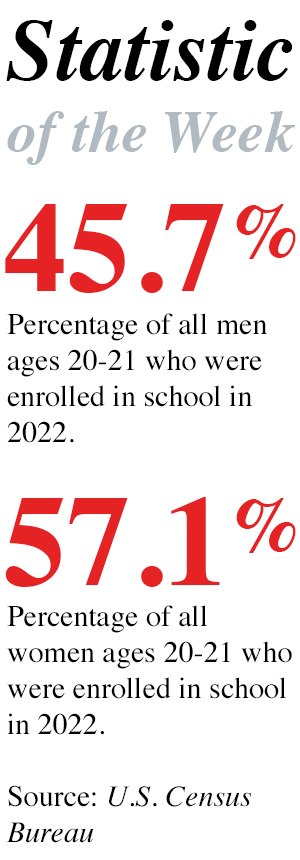The Higher Education Gender Gap in Enrollments Is Compounded by Lower Graduation Rates for Men
Posted on Nov 10, 2021 | Comments 0
 A new report from the Brookings Institution finds that there is a gender gap not only in rates of college enrollment but also in rates of completion among those who do enroll.
A new report from the Brookings Institution finds that there is a gender gap not only in rates of college enrollment but also in rates of completion among those who do enroll.
In 1972, when the U.S. government passed the landmark Title IX laws to promote gender equality in education, there was a 12 percentage-point gap in favor of men in bachelor’s degree awards. By 1982, the gap had closed. Nobody predicted what happened next: the gap started to widen rapidly in the opposite direction. By 2019, the gender gap in bachelor awards was wider, at 14 points, than it had been in 1972 — but the other way round. Similar trends can be seen in every stage of the education system, and in almost every country in the world, according to the report.
In 2012, 11.6 million women were enrolled in higher education, compared to 8.6 million men. But the gender gap has continued to widen. In 2020 the decline in male enrollment eclipsed the decline in female enrollment for the fifth year in a row. Male students now make up a smaller share of all enrolled students in the United States than ever before — just 41 percent of students enrolled in a postsecondary institution in the fall of 2020 were men.
But the higher education gender gap gets even wider when we look at who graduates compared to who enrolled. Men who enrolled in a four-year college in 2013 were 10 percentage points less likely than women to graduate within 4 years. Six years after enrolling, the gender gap in graduation narrows to six percentage points.
Over 1.1 million women received a bachelor’s degree in the 2018-19 academic year compared to fewer than 860,000 men. The percentage of women among those who earn master’s degrees is even higher. And now women also earn a majority of all doctoral degrees.
Filed Under: Research/Study








